How to Water Plants When Away for 2 Weeks
Learn how to water plants when away for 2 weeks with 5 easy DIY self-watering systems. The ultimate guide to vacation plant care.
Don’t Fear the Droop: 5 DIY Solutions for Watering Your Plants While on Vacation
There’s a specific type of anxiety that only a plant parent can understand. You’ve booked your dream vacation, you’re packing your bags, and then you look over at your lush, green houseplant collection and a wave of panic sets in. Who will water the plants? As a tiny home dweller and a devoted plant enthusiast at Neat Tiny Home, I know this feeling all too well. Coming home to a collection of sad, crispy, or drooping plants is a heartbreaking end to a wonderful trip. For years, I relied on the kindness of friends and neighbors, but that’s not always an option. So, I set out to master the art of low-tech, DIY solutions to keep my plants happy and hydrated while I’m away.
This is your ultimate guide to stress-free vacation plant care. We are going to tackle the number one question on every traveling plant owner’s mind: how to water plants when away for 2 weeks? I’m going to share my top five favorite, easy-to-create methods, from a classic string-wicking system to a clever plastic bag greenhouse. Each of these is a simple self-watering system DIY project that you can set up with items you likely already have around the house. We’ll also cover the crucial pre-vacation prep that will give your plants the best possible chance of thriving in your absence. My goal is to give you the tools and the confidence to head off on your next adventure, knowing that a happy, healthy urban jungle will be waiting for you upon your return.
The Pre-Vacation Panic: Ensuring Your Green Friends Thrive While You’re Away
Before we dive into building our DIY systems, it’s important to understand the overall strategy. Our goal isn’t to replicate our normal care routine; it’s to create a stable, low-stress environment where our plants’ needs are minimized while we’re gone. We want to slow down their metabolism, in a sense, by reducing the amount of light and heat they receive, which in turn reduces their need for water. This is combined with a system that provides a slow, steady supply of moisture to keep them hydrated. This two-pronged approach—reducing their needs and providing a steady supply—is the secret to successful vacation plant care. It’s a proactive strategy that sets your plants up for success before you even walk out the door.
The Critical Pre-Trip “Spa Treatment” for Your Plants
About a week before you leave, take some time to give your plants a little extra attention. This “spa treatment” ensures they are in peak health before they have to fend for themselves.
- Pest Check: Inspect every plant—top and bottom of leaves, stems, and soil—for any signs of pests like spider mites or mealybugs. A pest infestation can wreak havoc while you’re away. Treat any issues immediately.
- Prune and Tidy: Snip off any dead, yellow, or dying leaves. These are just draining energy from the plant. Also, remove any flower buds. Flowering takes a tremendous amount of energy and water, and it’s best to have the plant conserve its resources while you’re gone.
- Dust the Leaves: Wipe down dusty leaves with a damp cloth. Clean leaves are more efficient at photosynthesis and can make the most of the lower light conditions you’ll be providing.
The Foundation: Pre-Vacation Plant Prep
On the day before or the morning of your departure, it’s time to execute the final prep plan. These four steps are the foundation upon which your DIY watering systems will be built. Do not skip this! This is the most important part of learning how to water plants when away for 2 weeks.
- A Deep, Thorough Watering: This is the most important step. Take every single plant to the sink or bathtub and give it a deep, thorough soaking until water runs freely from the drainage holes. Let them drain completely for at least 30 minutes. This ensures the soil is fully saturated and starts them off with a full “tank.”
- The Move – Shifting Plants Out of Direct Sun: A plant sitting in a hot, sunny window will transpire (lose water through its leaves) much faster. Move all of your plants away from your sunniest windows and group them together in a spot that receives bright, but indirect, light. A spot in the middle of your living room or in a bathtub with a small window is often perfect. This simple act can cut their water needs in half.
- Boosting Humidity – The Grouping Method: Plants release moisture through their leaves in a process called transpiration. When you group your plants close together, you create a humid little microclimate. This collective humidity reduces the amount of water each individual plant loses.
- No Last-Minute Fertilizing: Do not fertilize your plants right before you leave. Fertilizer encourages new growth, which requires more water and energy. You want your plants to be in a stable, resting state, not a growth spurt.
With your plants prepped and moved, you’re ready to set up your chosen watering system.
| DIY Method | Good for Vacation Length | Best For | Key Principle |
|---|---|---|---|
| 1. String Wick System | 1-3 Weeks | Most houseplants, especially thirsty ones. | Capillary Action |
| 2. Wine Bottle Dripper | 1-2 Weeks | Medium to large pots. | Gravity-Fed Drip |
| 3. Plastic Bag Greenhouse | 2-4+ Weeks | Humidity-loving tropical plants. | Recycling Moisture |
| 4. Bathtub Vacation | Up to 1 Week | A large collection of small/medium plants. | Bottom Watering |
DIY Self-Watering System #1: The String Wick Method
This is the classic, time-tested method, and my personal favorite for its reliability and simplicity. This self-watering system DIY works via a scientific principle called capillary action, which is the same force that allows a paper towel to soak up a spill. The string will wick water from a reservoir to your plant’s soil, providing a slow, steady supply of moisture.
Step-by-Step Tutorial:
- Choose Your Wick: You need a water-absorbent material. Cotton or nylon rope, shoelaces, or even strips of an old cotton t-shirt work perfectly. Avoid synthetic materials that don’t absorb water well.
- Set Up Your Reservoir: Fill a large glass, jar, or bucket with water and place it next to your plant. The key is that the water level in your reservoir must be higher than the soil level of your plant pot, but the pot itself should be elevated so the bottom of the pot is higher than the bottom of the reservoir to avoid a siphon effect.
- Insert the Wick: Gently push one end of the string several inches down into your plant’s soil, near the base of the plant. Be careful not to damage the main roots.
- Place the Other End in Water: Submerge the other end of the string completely in your water reservoir, ensuring it reaches the bottom.
- Prime the Wick: Make sure the entire length of the string is wet to get the capillary action started.
The soil will now draw water through the string as it begins to dry out. A larger reservoir will last longer. This is an incredibly effective solution for how to water plants when away for 2 weeks.
DIY Self-Watering System #3: The Plastic Bag Greenhouse
This method sounds strange, but it is incredibly effective, especially for longer trips. By placing your plant inside a large, clear plastic bag, you create a mini-greenhouse. The plant will release moisture through its leaves (transpiration), which will then condense on the inside of the bag and drip back down into the soil, creating a self-contained, high-humidity, water-recycling ecosystem.
Step-by-Step Tutorial:
- Water Thoroughly: Start with a well-watered plant. This method will not add new water, it only recycles existing moisture.
- Stake Your Plant: Place a few bamboo stakes or chopsticks in the pot that are taller than the plant itself. This will prevent the plastic bag from resting on the leaves, which can cause them to rot.
- Bag It Up: Place the entire pot inside a large, clear plastic bag. Pull the bag up and over the stakes.
- Seal (Almost): You can either gently tie the top of the bag or just tuck it under the pot. You want to trap the humidity, but leaving a tiny opening for some air exchange is a good idea.
- IMPORTANT: Place this bagged plant in a spot with low or indirect light. NEVER place it in direct sun, as the greenhouse effect will heat up and cook your plant.
This is a fantastic method for humidity-loving tropicals but should be avoided for succulents and cacti. For more houseplant care tips, I always love the advice from the experts at Gardenista.
When DIY Isn’t Enough: Store-Bought Solutions
If you’re not a fan of the DIY approach or you have a particularly valuable or sensitive plant, there are some great store-bought options that can provide peace of mind.
- Watering Globes and Spikes: These are glass or plastic bulbs that you fill with water and stick into the soil. They slowly release water as the soil dries out. They are beautiful and simple, but be sure to test one before you leave to see how quickly it drains in your specific pot. You can find them at most garden centers or on sites like Amazon.
- Self-Watering Planters: For a long-term solution, consider moving your most precious plants into self-watering planters. These pots have a built-in water reservoir at the bottom and a wicking system that draws water up into the soil as needed.
- Drip Irrigation Kits: For a larger collection of balcony plants, a simple, battery-operated drip irrigation kit can be a lifesaver. You can find beginner-friendly kits from companies like Rain Bird that can be set up in under an hour.
With a little preparation and a clever DIY system, you can head off on your travels with the peace of mind that your green friends will not only survive but thrive in your absence. Happy travels, and happy planting!
Frequently Asked Questions (FAQ)
What about my succulents and cacti? Should I set up a watering system for them?
No, absolutely not! Succulents and cacti are desert plants that are adapted to long periods of drought. Giving them a thorough watering right before you leave is all they need. Setting up a self-watering system for them while you’re away is a guaranteed way to cause root rot. They will be perfectly happy, and probably even happier, if you just leave them alone.
Will the string wick method give my plant too much water?
It shouldn’t, if set up correctly. The beauty of capillary action is that it’s a passive system. The soil will only “draw” water through the wick when the soil itself is starting to dry out. It’s a self-regulating process. However, for plants that prefer to dry out significantly between waterings (like Snake Plants or ZZ Plants), you’re better off just giving them a deep soak before you leave and forgoing a watering system altogether for a 1-2 week trip.
I’m only going away for a long weekend (3-4 days). Do I need to do all this?
For a short trip, you can usually get away with a much simpler approach. The “Pre-Vacation Plant Prep” is all you really need. Give all your plants a very deep and thorough watering, then move them out of direct sunlight and group them together to increase humidity. For all but the thirstiest, smallest-potted plants, this will be more than enough to see them through a long weekend.
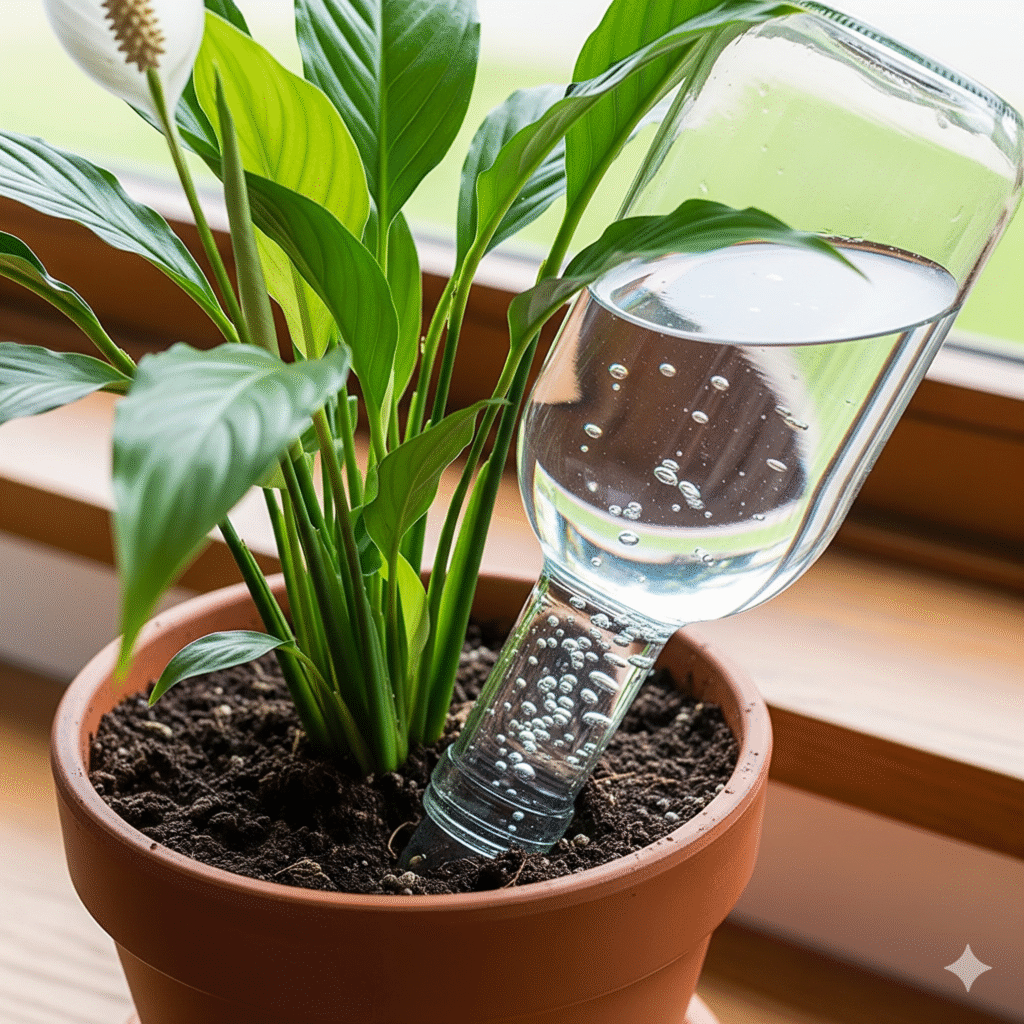
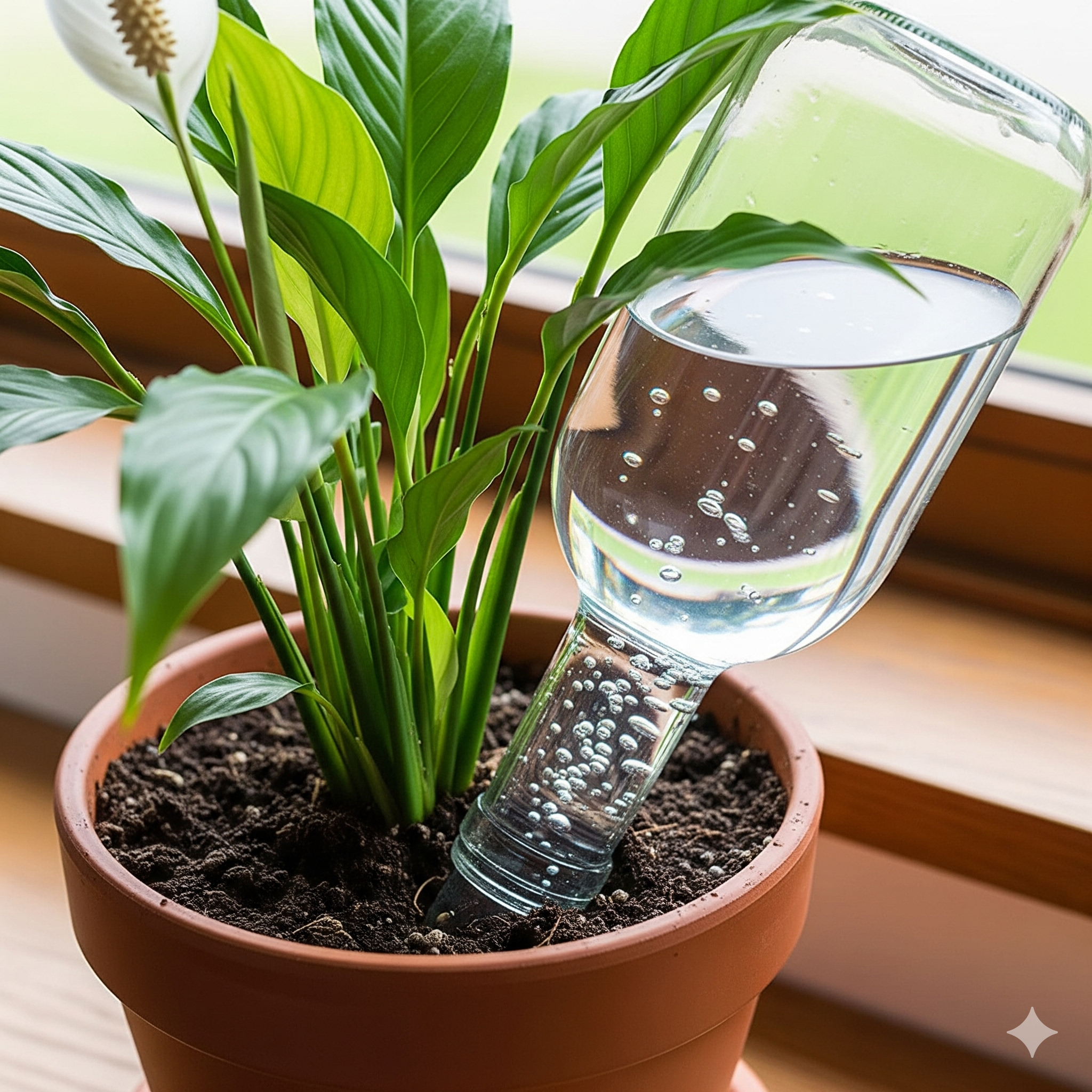
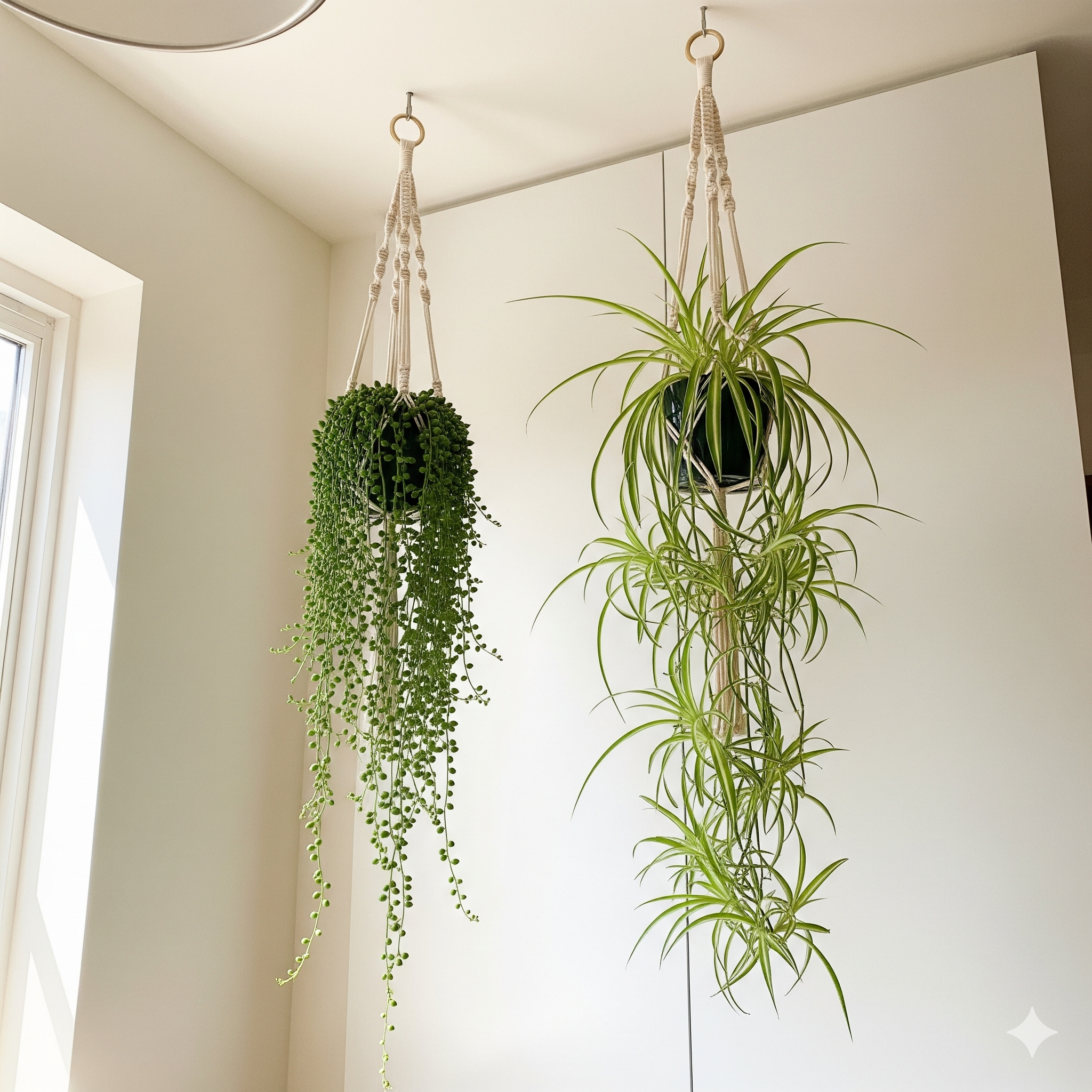
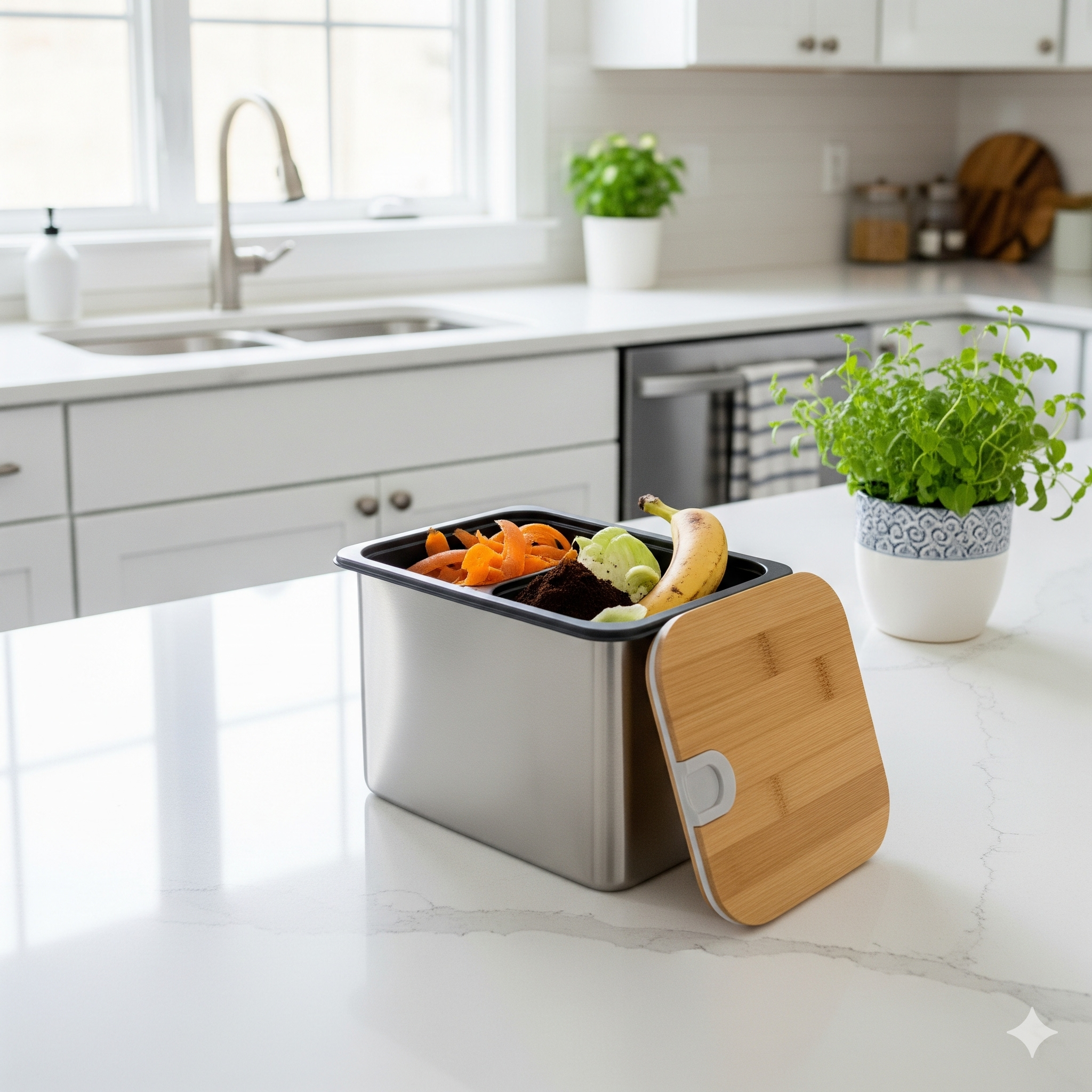
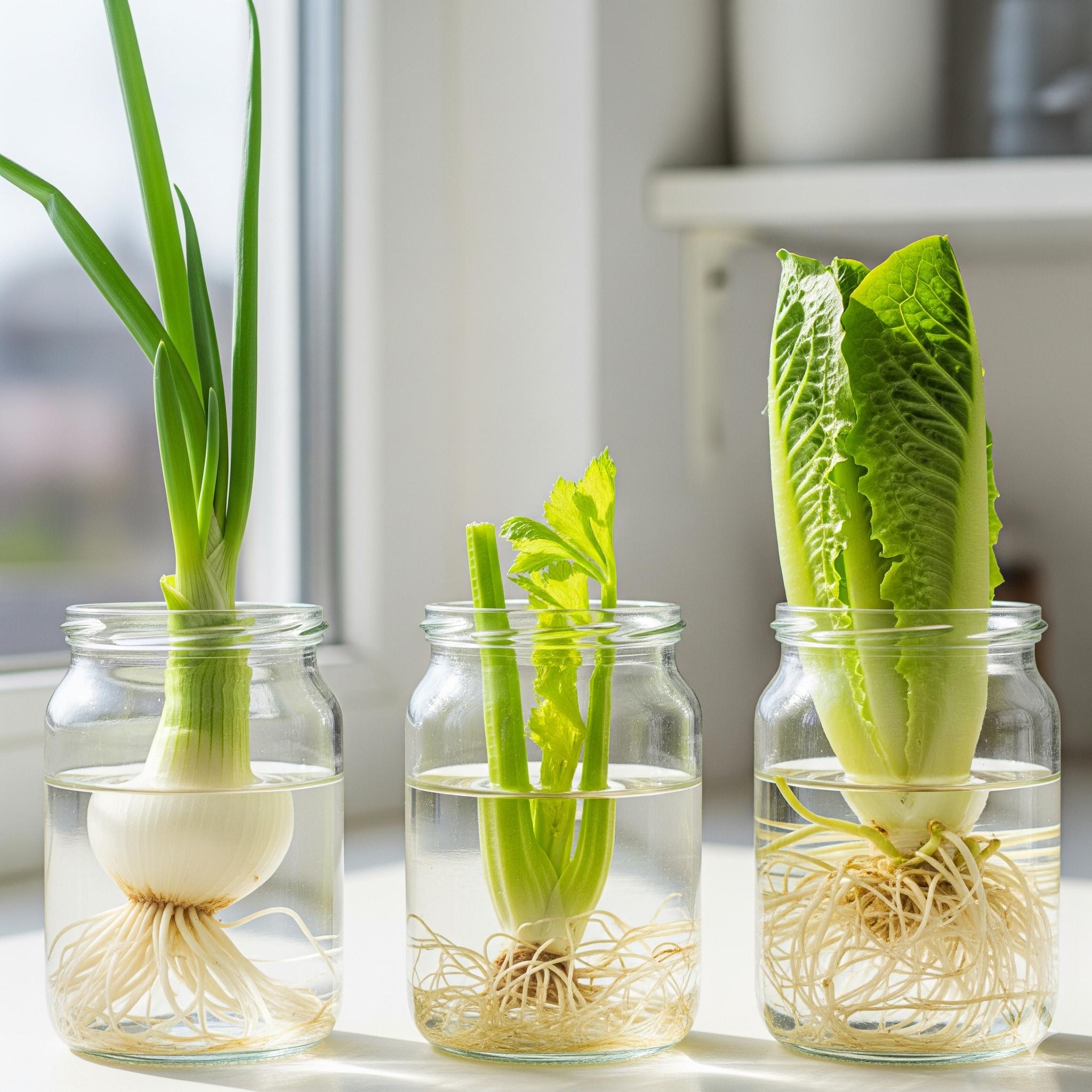
Post Comment